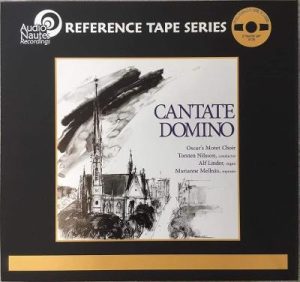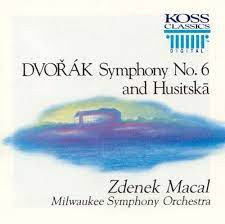A great new listening experience for this well loved performance, perhaps the greatest performance of Mahler's Third Symphony in the catalog.
Mahler Symphony No. 3, R. Strauss Death And Transfiguration, Jascha Horenstein LSO, recorded by Jerry Bruck. HDTT 1970 2024 (24/192k 4.0 Surround and Stereo) HERE
We all know this famous Horenstein Mahler Third Symphony performance as heard in the much admired recording engineered by Bob Auger for the small British label Unicorn (released in the United States on Nonesuch). It was recorded in six sessions that occurred on July 27, 28 and 29, 1970 at the Fairfield Concert Hall in the London suburb of Croydon.*
What is largely unknown is that American recording engineer, Jerry Bruck, was invited by John Goldsmith, founder and general manager of Unicorn Records, to set up his own microphones and recording equipment to capture an experimental four-channel surround recording of these sessions. Working from a separate control room with a Scully 1/2-inch four channel reel-to-reel recorder at 15ips, and just four microphones, Bruck was interested in an experiment: making a recording that would be "a practical test of tetrahedral ambiophony." In other words, a version of four channel surround sound. (More details about the microphone setup below.)
Jerry Bruck never assembled his session tapes into a complete edit master (except the third movement). His recording of this great Horenstein performance has never before been released. With the kind permission of Jerry Bruck, HDTT's Bob Witrak transferred Bruck's original session tapes to 24-192kHz files. These files were then delivered to John Haley, Harmony Restorations (see here for an earlier unrelated interview), for editing into a final edit master in both stereo and 4.0 surround.
And what a wonderful aural experience this is!
Never a fan of multi-miking, Bruck worked simply with a pair of front facing microphones to capture the left and right channels. To these he added a single microphone pointed to the rear and a single microphone pointed to the ceiling. In the liner notes, John Haley describes this array as "a fixed array of four hypercardioid Schoeps mics placed in the form of a tetrahedron (a "pyramid" with a triangular base) with a mic at each corner, about one meter apart, with cancellation at about 150° off axis, so the null of each microphone was at about the maximum point of sensitivity of all the other mics."
There is a clarity to this recording that one does not often hear. Some of this is certainly Horenstein's conducting. But more of what I'm reacting to is the nature of Jerry Bruck's recording itself.
The limited number of microphones, and the close spacing of the microphones, means that phase issues are largely non-existent (unlike the Bob Auger's multi-mic'd recording). The sound is thus utterly transparent and clear. And detail is extremely well captured, even without spot-miking support so often thought necessary by other recording engineers. This all harkens back to the minimally mic'd days of early Decca stereo recordings (particularly those engineered by Roy Wallace over many years from the European continent) and Bob Fine's Mercury Living Presence recordings.
And the dynamic range! Wow. Listen to this recording with the volume down just a bit from your normal setting or the peaks may nail you and your system. John Haley has mastered these files with no limiting and no compression. The soft passages are really really low volume, and the peaks are full out high volume. So, be warned. Never let it be said that 15ips analog tape doesn't do dynamic range.
I'm listening to the stereo 24/192kHz files from HDTT, not the surround files. John Haley tells me that, if I'm enjoying the stereo, I really need to hear the surround to get the full impact of what Jerry Bruck captured. He says it is yet another level of great listening experience. I believe him. But, I'm extraordinarily happy listening to this wonderful stereo release.
Recording engineer Jerry Bruck
When I first heard about this project two years ago, I asked Bob Witrak "What's up with 24/192kHz?" I wanted the full Monty—DSD256 or DXD. Bob was patient. He explained that, given the length of the symphony and given four channels of data, he was concerned that the sheer size of the files would make the project untenable to edit and master. So, transferring in 192kHz was a compromise and an acquiescence to what he and John could reasonably manage working with. So, it is what it is. Might it sound even a bit better had it been processed in DXD? Oh, yes, I believe so. But, does this sound incredibly good at 192kHz? Oh, yes! It is utterly amazing to hear this performance in this minimally-mic'd stereo glory. If you can listen to all four channels (two front, one rear, one ceiling), go for it!
When mastering this, John tells me that he rearranged his four channel audio system in this two front, one rear, one ceiling configuration and the auditory engagement was exceptional. In his liner notes, John says,
"Unlike some recording set-ups that place mics in the rear of the space to capture ambient signals, Bruck captured the ambient hall sound as reflected back to the nominal listener’s ears from the hall’s rear walls and ceiling, with that nominal listener seated roughly in the center of the mic array. The intent was to capture a hemisphere of sound where the nominal listener was situated, with the 'up' and rear channels consisting entirely of reflected sound (an exception is the flugelhorn solos in the third movement; that instrument was situated in the back of the hall)."
As to the fourth ceiling channel, John has mastered that to work satisfactorily as a rear ambient channel. He says,
"because very few listeners have a full-range speaker mounted on the ceiling directly above the listening space, the 'up' channel has been employed as an alternate rear ambient signal for more conventional multi-channel listening. This works well, as human beings do not have strong directional recognition of sounds coming from directly overhead (as this writer demonstrated for himself by mounting a matching speaker overhead), and the additional reflected hall sound captured in the 'up' channel, which has a very similar delay factor and which has no recognizable 'uppiness' characteristics to the ear, is still fully preserved and present in the audio recreation of the experience of sitting in the hall. And if a listener wants to reconstruct the original set-up, all that has to be done is route the right rear channel to an overhead speaker and the left rear channel to a center rear speaker; the two 'hall' channels devoted to reflected sound are still intact, as recorded."
The challenge John Haley faced in editing the session files into a complete releasable album was session tapes had never been edited down into a whole releasable performance, except for the third movement which Bruck himself had edited. What John faced was an immense jigsaw puzzle. "Fortunately," John writes, "we have Mahler authority Deryck Cooke’s editing notes from the original editing sessions, in which he assisted, for 5 of the 6 movements. However, for the long first movement, it was necessary to follow the editing heard in the Unicorn recording, which was arduous given the large number of takes and the many large and small edits. The result is worth the effort." In a conversation with John, he wryly commented that given what he heard of the LSO's horns in several of the session takes, it was amazing that Horenstein managed to get such a coherent final result. I find it amazing that John Haley has delivered to us such a luscious and coherent full symphony recording!
And, perhaps most importantly, John believes that the result of all this effort is that the performance heard in this new release is exactly what Maestro Horenstein approved.
Here are some cover images (courtesy Discogs) from the Bob Auger recordings released by Unicorn and Nonesuch with which we are so familiar. As noted, the performance sessions in these and the Jerry Bruck recording are the same, but the recorded sound is very different:
 * Recorded by Auger for release in stereo, his tapes were later used in a quad mixdown for Japanese-made Quad LP by JVC that saw limited release in the 70s. But, that JVC mixdown of the Auger tapes has nothing to do with this recording that HDTT has now released.
* Recorded by Auger for release in stereo, his tapes were later used in a quad mixdown for Japanese-made Quad LP by JVC that saw limited release in the 70s. But, that JVC mixdown of the Auger tapes has nothing to do with this recording that HDTT has now released.











































